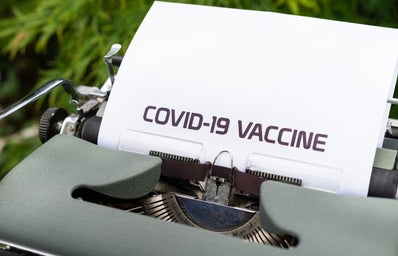With the Johnson & Johnson COVID-19 vaccine recently receiving authorization for emergency use, we are now left with three vaccine choices. While there are more similarities than difference between the three vaccines, some may be more selective when their time comes to get their shot. It also may be hard to understand in simple terms exactly how the vaccines work. Here is a breakdown of the Moderna, Pfizer, and Johnson & Johnson vaccine, and why you shouldn’t pass up your opportunity to get a completely safe vaccination!
How mRNA vaccines work
First things first: the virus that causes COVID-19 is called “SARS-coV-2”. All viruses have a genetic “code.” A part of the SARS-coV-2 code called the messenger RNA (or mRNA) is taken. mRNA tells our body what to build. This is coated in lipids and injected into our body. Once inside, the mRNA tells our body to manufacture a part of the SARS-coV-2 virus. This is the part known as the “spike protein”. This is created and soon destroyed, as our immune system then kicks into gear, producing antibodies and memory T-cells to take down these spike proteins. The side effects you may feel are a symptom of your immune system working, and are a generalized immune response. In the future, when you are potentially exposed to this virus, your body has already made the proper tools to fight it off- giving you “immunity!”
How viral vectored vaccines work
A viral vector vaccine uses a version of a different virus, which is called a “vector.” The vector delivers information to our cells. Once it enters the body, it will enter our cells, which then creates the spike protein. The cell will have this spike on its surface, and the immune system will think: “Hey! You don’t belong here!” Once this happens, the immune system creates antibodies and memory T-cells to fight off what it sees as an infection. This is our body effectively creating immunity to the virus, and it will be prepared to do the same thing should you ever get exposed to COVID-19. Once again, the side effects you may experience at this time is a signal that your immune system is fighting off what it sees as an infection. It’s important to understand that viral vectored vaccines cannot give you COVID-19, and injecting the vector into our body is harmless.
The Pfizer Vaccine
This vaccine is made using mRNA. It is given in the upper arm muscle. It is a two dose vaccine, with the second shot being administered 21 days after the first. Fullest possible immunity is not reached until after the second dose. People sixteen and older and able to get this vaccine, making it available to the largest population among the three vaccines. Side effects are most common after the second dose. This vaccine is very successful, sitting at 95% efficacy, meaning after the full two doses, 95% people have not had any symptomatic spread of the virus.
The Moderna Vaccine
This vaccine is also made with messenger RNA, and injected into the upper arm muscle. It is a two-dose vaccine, with the second shot being administered 28 days after the first. Fullest possible immunity is not reached until after the second dose. This vaccine is currently authorized by the FDA for people eighteen and older, but studies are currently being done on those between twelve and seventeen. We can likely expect authorization for these ages, as well! Side effects are most common after the second dose. So far, the Moderna vaccine has had a 94.1% success rate, a bit lower than Pfizer’s. This vaccine requires two doses to be fully effective. Moderna has reported that there is no evidence to suggest that receiving this vaccine while pregnant would be harmful to the pregnancy.
The Johnson & Johnson Vaccine
Differing from Moderna and Pfizer, this is a viral vectored vaccine, delivered in the upper arm muscle. This vaccine was tested on adults eighteen and older, so that is the age that it has been authorized for by the FDA. This is a one dose vaccine, which will tremendously speed up the process of getting adults vaccinated. Currently, the company is also testing out a two-dose vaccine. This vaccine has simpler storage requirements than the Pfizer and Moderna vaccine, which should help it become more available and easier to distribute.
With three vaccines to choose from, there is not a wrong choice to make. Hopefully, in better understanding how the vaccines work, you are more inclined to receive yours. It’s important to remember that choosing to get vaccinated not only protects you, but protects everyone around you from the spread of the coronavirus, which will in turn save countless lives. When it’s your turn to get vaccinated, do not pass up your opportunity! The responsibility of overcoming this virus lies in all of our hands and it will take all of us to effectively beat it! When your time comes, trust the science and get poked!

